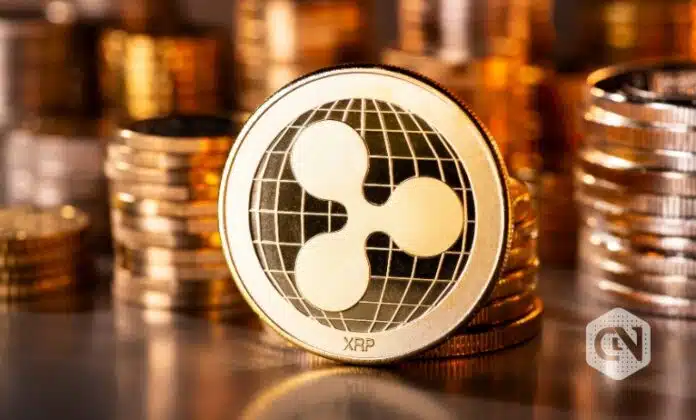
As the landscape of crypto and blockchain technology continues to surge, various cryptocurrencies such as Bitcoin, Ethereum, and Ripple have appeared more prominently than ever before. Specifically, Ripple, along with its native digital asset, XRP, goes a long way toward making it a real success. After all, Ripple has already revolutionized the financial industry tremendously, and XRP’s role in doing so is also highly creditworthy.
In the following sections, we elaborate on the intricacies of XRP and Ripple and their profound technological impact. While doing so, we uncover numerous innovations that will influence the future of finance.
What is Ripple? A Revolutionary Wave in Digital Assets
Ripple, in a technical sense, is more than a cryptocurrency; it is typically referred to as an inclusive ecosystem designed to revolutionize and streamline wide-ranging payments carried out worldwide. Ripple Labs, the U.S.-based corporation responsible for creating the Ripple protocol, has developed a number of cutting-edge technologies. At this juncture, XRP, Ripple’s native digital asset, significantly comes into play to revolutionize the trend.
In general, Ripple is a real-time gross settlement system (RTGS), currency exchange, and remittance network deep down. It distinguishes itself from its rivals due to its emphasis on quickness and competence. Another highlight of Ripple is its ability to carry out cross-border transactions almost instantly and at a fraction of the cost compared to regular banking systems.
XRP, on the other hand, serves as a bridge between wide-ranging fiat currencies. Its efficiency in enabling speedy and cost-effective global transactions is worth every inch of consideration. That is why most financial institutions seeking to reduce friction in cross-border payments consider it.
Ripple’s cutting-edge technology, particularly the Ripple Protocol Consensus Algorithm (RPCA), is at the forefront of disrupting the traditional banking sector. This is because the technology offers a more efficient and transparent alternative for transferring value. Due to this combination of state-of-the-art technology and financial innovations, Ripple is a game-changer in the digital asset landscape.
How Ripple’s Blockchain Technology Stands Out
Ripple’s blockchain technology stands apart from other cryptocurrencies and financial innovations for a number of important reasons.
Consensus Mechanism: Ripple implements a specific and singular consensus algorithm termed the Ripple Protocol Consensus Algorithm (RPCA). Compared to Bitcoin in terms of energy-intensive proof-of-work, RPCA stands out as a leading player due to its more efficient and lower power consumption. Due to this specific trait, which refers to faster transaction times and subjugated energy consumption, it becomes a more eco-friendly choice for most Ripple investors and fanatics.
Interoperability: Ripple attaches special importance to the aspect of interoperability between a variety of financial systems and institutions. Plus, blockchain technology is effective enough to unify disparate currencies remarkably, allowing cross-border transactions to be processed seamlessly. Due to its special focus on interoperability, Ripple has become the most befitting choice for financial banks and payment providers seeking streamlined international payments.
Transparency and Security: Thankfully, Ripple has developed a unique blockchain system. Every user’s ability to see transaction histories and confirm payments are processed without any problems is made possible by it. In the interim, Ripple implements foolproof security measures to safeguard sensitive financial data. This characteristic makes it the go-to solution for financial organizations regarding data integrity.
XRP as a Bridge Currency: Through the use of XRP as a bridge currency, Ripple’s blockchain technology enables quick and simple value transfers across various fiat currencies. High speed and low transaction costs, which together make XRP an organized bridge, are two other crucial features.
Transactions on the Ripple Network: Fast and Economical
Ripple’s technology has revolutionized cross-border transactions by streamlining them remarkably and offering speed and cost-effectiveness that cannot be compared to traditional banking systems. Ripple’s consensus algorithm is the thing that plays a key role in this transformation. It also powers the Ripple Protocol Consensus Algorithm (RPCA).
The RPCA alone is responsible for the lightning-fast speed at which Ripple transactions occur. RPCA achieves network consensus virtually instantly, in contrast to proof-of-work mechanisms that necessitate using a lot of processing resources. It enables Ripple to process transactions almost instantly, which is not possible with conventional cross-border payments.
The online gaming and casino sectors are two of the diverse industries and sectors that have benefited from Ripple’s technology and leveraged its potential. Similar to Bitcoin and Ethereum casinos, Ripple casinos have recently drawn customers looking for quick and affordable payment methods. Gamers may instantly fund their accounts or withdraw their winnings because of the massive and quick speed of XRP transactions. As a result, gamblers enjoy a unique gaming experience.
Ripple’s technology has also earned cachet and prominence among financial institutions and payment providers. The technology is at the cutting edge of processing cross-border transactions at a relatively lower cost than traditional methods. Due to this special ability, Ripple has become the ultimate solution for individuals and entrepreneurs seeking streamlined international payments.
Conclusion
The landscape of finance and beyond is redefined and reshaped by Ripple’s cutting-edge technology, powered by XRP and supported by the Ripple Protocol Consensus Algorithm (RPCA). It has caused a stir in the world of cross-border transactions because of its exceptional speed, capabilities, and cost-effectiveness. Because of its consensus process, which enables interoperability and security, Ripple’s blockchain has gained seamless cachet and popularity. This technology serves as a bridge to a financial future that is more open to all and more equal, in addition to being a disruptive force. Ripple is a prime example of the revolutionary potential of blockchain innovation in altering how we move value across the globe as it continues to grow its reach and alliances.